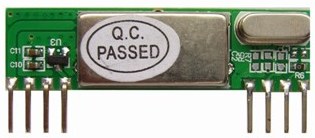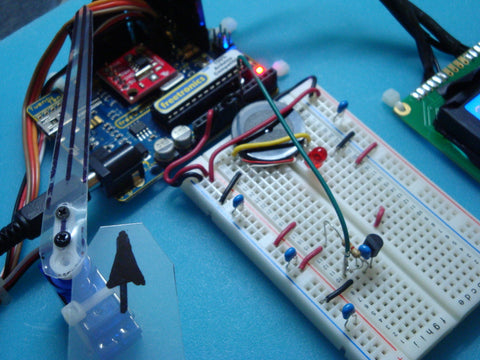The 433MHz Receiver Shield has been an unexpected smash hit, and now we've made it even better. The original design used an RXB1 receiver module just like the ones you can buy in Jaycar and other parts retailers. It's the small green PCB you can see here attached to the top of the shield.

The RXB1 is a self-contained radio receiver module that does the job of taking the raw radio signal with its ASK (Amplitude Shift Keying) modulated data stream and turning it into logical 1s and 0s to send out via a data connection to the Arduino for analysis in software. It's a handy little module that does the job very well.
But now thanks to some detective work by Marc and the assistance of contacts in China we've switched to the RXB6 module.

The main improvement in the RXB6 is greater sensitivity, allowing it to pull in weak signals that the RXB1 just can't latch onto. One of the things I personally use a 433MHz Receiver Shield for is collecting data from a La Crosse weather station (hmmm, I think that may have been documented in a book somewhere) and it's been very marginal with the weather station on the other side of a metal roof. Once I switched to a newer shield using the RXB6 all the reception problems went away and it's been perfectly reliable ever since.
















 Sometimes I come across symbols in circuit schematics that make me double take and say "what the...?" under my breath. Engineers seem to have a tendency to want to keep tweaking things even when they're "good enough", and the result is a huge variety of symbols used to represent even common parts.
Sometimes I come across symbols in circuit schematics that make me double take and say "what the...?" under my breath. Engineers seem to have a tendency to want to keep tweaking things even when they're "good enough", and the result is a huge variety of symbols used to represent even common parts.


